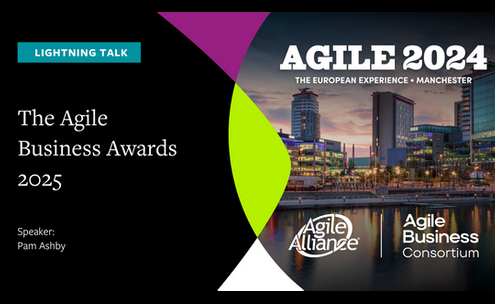Evaro Case Study:
As a doctor on the frontlines, faced daily with medical emergencies, Evaro’s Dr Thuria Wenbar has also witnessed the challenges patients face accessing care for even minor health issues in an overburdened system.
Dr Wenbar, co-founder and CEO of the UK-based medical startup, explains: “It’s a frustrating maze of appointments, time off work, waiting in waiting rooms and running around to get your prescriptions. I knew there had to be a better alternative, so Evaro is building a platform that empowers individuals to manage their health in a simpler, more convenient, self-serve way.”
Combining her medical expertise with her background in software development, Dr Wenbar and her team set out to find an innovative solution to improve access to everyday healthcare. Evaro partners with trusted brands to provide AI-driven, asynchronous consultations and private prescription services, addressing the health issues typically handled by General Practitioner doctors (GPs) in the UK.
Dr. Wenbar details the kind of organisations Evaro works with: “We are a digital health platform, so we work with third-party brands and open up their digital health arm – that might be anything from a sex toy company to one that wants to offer prescription medication for menopause or erectile dysfunction. It may be a cosmetics company offering treatment for acne, eczema or psoriasis – not just an over-the-counter treatment but prescription strength treatments.
“We hand over the technology to these big brands and then we ask patients a series of questions – all asynchronous – no video calls, no phone calls. We review the answers to their consultations, in the form of questionnaires. We issue the prescription and then we fulfil it from our warehouse pharmacy.
“So we handle the whole chain and try to make as much of it self-service as possible, keeping behind the regulators that we have to appease as well and also making sure it’s incredibly safe for patients.”
Dr Wenbar adds: “The affordable services Evaro provides offer an alternative to lengthy wait times for GP appointments and the high costs of private healthcare.
“To date, we’ve supported over 350,000 patients and saved the NHS almost 11 million pounds!”
The Challenge
Rapid changes in the health tech industry and an ensuing need to simply ‘get more done’ meant Evaro needed to adopt a new method.
Dr Wenbar remembers: “A year ago, we were going really fast, and everything was on fire, as it would be with any start-up. We had a million competing pressures.
“We wanted to grow sales, improve our technology, we had regulators to appease and it was really difficult to handle all those using a waterfall method where we were saying: This is our roadmap for the next six months but then, oops, this thing is broken, or the regulations have changed. So that’s really why we ended up leaning into agility.”
Challenges of transforming to agility
So how did the company use agility in the beginning and what challenges did they face?
Dr Wenbar explains: “It was the development team who initially adopted agile methodologies but the concept was later extended to different functions across the organisation, enabling better cross-functional collaboration, enhanced productivity through iterative sprints, and greater responsiveness to dynamic industry shifts.
“We started with this book: The 12 Week Year, by Brian P. Moran and Michael Lennington, the idea of which is that you condense your milestones to be 12 weeks. Each week is considered a month and all of a sudden, your business gets a whole bunch more done!”
But it wasn’t all plain sailing. Dr Wenbar admits: “To be honest, we were just following textbook processes. I listened to a lot of podcasts, read a lot of books and the way that we ended up using it was essentially making a big to-do list of things we wanted to get done – a ‘product backlog’ in Scrum terminology.
“But actually, we thought of the backlog as just an opportunities space, so we dumped loads of ideas into this massive list and it very quickly became overwhelming!
“In the Scrum process, you look back at the end of the week and ask what went well, what went badly and it ends up feeling like a chore. How do you motivate people when they hear the same questions every single week?
“We tried to get creative with these retro sessions but to be honest, the problem was just that they were happening too frequently. We were making so many micro-changes that the team couldn’t work out if they liked what had happened.”
The solution
So what did the company do? Dr Wenbar recalls: “We went into this backlog, picked out the most important items and then would throw them into a sprint that typically lasted between one and four weeks. At the beginning of each sprint we had a long planning session to work out who was doing what, when people were doing things and what was dependent on different activities.
“And we would have these daily meetings, 15-minute stand-ups. People were saying which things they were blocked on, what they were working on, and what they had got released, and it was really, really working! From getting a new product released every 12 weeks, we were suddenly getting one released every 2 weeks!”
She continues: “What we did then was move this process to the rest of our company. So obviously, in the beginning, Agility and Scrum worked completely fine in the development world. “So with developers, with engineers, we then moved it to marketing, then put the same thing in our clinical teams. So our doctors were working out which risk assessments to do and which new medications to offer. We had an opportunities backlog – all the medications that people get prescribed in minor health and how many people get affected by those diseases.
“We saw improvements but then we started stagnating, and needed to work out how to move away from the stagnation.”
‘We ripped apart traditional Scrum to make it work for us!’
Dr Wenbar explains: “So we started using a virtual metaverse office called Gather Town. It looks a little bit like old-school Pokemon video games, and allows us, whether we’re in our office, upstairs or downstairs, or with our remote team, who might be in Portugal or Budapest, to basically move into real-time communication.
“So instead of having asynchronous communication with Slack or the tickets within Scrum, if something was released, or if there was a bug, you could walk your little Sprite character to the desk of your colleague, disturb them and say: ‘Excuse me, this is a problem’. That problem would then get fixed, either in the next sprint or immediately if it was a five-minute issue.
“The other thing we did was we actually changed our retrospectives. In the Scrum process, you look back at the end of the week and ask what went well, what went badly and it ends up feeling like a chore. How do you motivate people when they hear the same questions every single week? We tried to get creative with them but to be honest, the problem was just that they were happening too frequently. We were making so many micro-changes that the team couldn’t work out if they liked what had happened.
“So we reduced the frequency of these retrospectives to once a month, where we took a big hour out of our working week and asked if what we were doing was working and if there was anything we wanted to do differently. That could be something as simple as moving around team members or what time we wanted the daily stand-ups, but it just allowed us to have this continuous, iterative, agile process.”
The company also implemented a weekly show-and-tell. Dr Wenbar describes this: “In our virtual metaverse office, we have a place called the Barn. It literally looks like a barn. Everyone walks in and we go through that week’s releases or what’s been worked on – whether it’s what the design team has produced, what the developers have made go live, and anything that needs a debate — it all goes there.
“We then introduced something called Fight Club – this happened between me, my CEO and my CTO – we brought all the urgent issues that really needed attention into this one-hour, really argumentative session. But then we got to allocate resources instead of trying to disrupt the team who already had their plan for that week.
“Realistically, we decided that if something wasn’t really on fire, it could probably wait until the following Monday when we had Fight Club and could work out where to pull resources from and get it done. We ripped apart traditional Scrum to make it fit for us!”
Solutions to specific challenges using “test-and-learn”
Discovery Engine
‘Failing fast’ is a key part of being agile but can this really work in healthcare, where so much is at stake?
“Yes!” says Dr Wenbar, going on to describe an iterative approach to one of Evaro’s key products: the discovery engine:
“We built a tool called the discovery engine, which is basically a search function. When we have patients coming to our website, particularly through these third-party brands, they don’t necessarily know how to navigate a menu because they might not know that ‘acid reflux’ is to be found under ‘gut health’ or that ‘high blood pressure’ might go under ‘heart health’. And if you didn’t spell a specific medication exactly as it should be spelled, you wouldn’t find it in a search function.
“To combat this, what we ended up doing was creating a really quick proof of concept with Open AI that would allow people to put in their search term, for example: ‘I don’t want to get pregnant’ and then the search engine would hopefully come up with ‘contraception’ and ‘emergency contraception’ and not ‘fertility treatment’.
The product was super ugly at first! It was literally just input-output that was a two-week project. Our initial results actually showed that from our search function and our navigation function, our conversion rates—where people were able to go from ‘search’ to finding the product, went up from three per cent to 21 per cent. This was low cost, at £12,000, and it wasn’t live for most people. We used this idea of ‘canary’ releases where we only released them to three per cent of the websites or then 5 per cent, 10 per cent, so we could safely check the results.
“Then, when we had that first lot of data, we were confident it was absolutely working! This gut data concept we had in the beginning allowed us to say what amount of data we had at the time, then release another tranche of budget towards the project to make it look better and add different tools.
“So we then added dialogue flow, which is a Google AI product, a natural language understanding platform, cheaper than Open AI, and now our system can roughly work out if there’s a misspelled synonym and for a much lower cost.”
Dr Wenbar goes on: “So we started off with the first search and then we went to OpenAI, then started adding these individual layers to reduce cost, and each time we’d assess the cost and establish what we needed the improvement in conversion rates to be to actually release the next budget.” It is Evaro's policy to send texts alongside emails to patients in case they miss their email and to keep them informed of where their medication is or any delays.
Dr Wenbar explains: “Each time we build a product, we write what metrics we’re tracking and what metrics we need to alert us when things are failing because ultimately, things do break.
“So, for example, every time we send an e-mail, especially if it’s a medication that’s being placed on hold and there’s going to be a delay in delivery we send the patient a text message as well. If you don’t do that and patients haven’t seen the e-mail, they get angry.
“But what if the text message system doesn’t work? Well, then, we have criteria that say for this release to be successful, we need a system that tells us how many emails and texts we are sending out per day, and if there’s a discrepancy, someone sends us an alert so someone can then tackle it. We have so many systems so if you don’t have those alerts built in, something might break and someone might not notice it for a few weeks.”
PR FAQs
Another integral part of Evaro’s agile transformation is PR FAQs, a concept borrowed from Amazon. PR FAQs are documents used to ensure that all stakeholders have a common understanding of an idea and can then focus product development efforts around the customer experience.
Dr Wenbar explains: “Now, instead of leading like a dictatorship, where I’m telling everyone my idea and what they need to do, we can hand over these PR FAQs. Whether they’re generated by me, or the rest of the development team, or the marketing or clinical team, they can then actually come up with what needs to be done and can decide what the likely questions are that people will ask about this product.
“They can also assess the return on investment. For example, if we spend two weeks of developer time on something and it’s going to cost us £12,000, are we going to get that money back, or is it just a nice-to-have idea? So now we’re moving into these self-organised structures who know what the outcome is, and they have the freedom, the autonomy and the trust to get there."
She adds: “We’re trying to reframe the wording of these PR FAQs too so we can include why something is beneficial for the end customer, why we want to get these new drugs live, why we want to build this new service for our customer service team.
"It’s a work in progress and I think that’s the beauty of agility."
“Outcomes are more important than outputs and we’ve also recently realised that, when it comes to the speed to launch and the speed to release, whether it’s releasing new products, new technologies or new marketing initiatives, velocity is a bit of a vanity metric. Greater speed doesn’t necessarily mean it’s better for our patients our business partners or our internal processes.”
The result
So what was the result of the transformation to agility and was it a success?
From introducing short, daily stand-ups and a virtual metaverse office, to reducing the frequency of their retrospectives and having weekly show-and-tells and ‘Fight Club’ style problem-solving sessions, Evaro has put its own stamp on agility.
By producing several iterations of the company’s discovery engine to PR FAQs and focusing on ‘a little and often’ when releasing products, technologies or initiatives, the company has taken significant steps to transforming the business.
Dr. Wenbar summarises her company’s efforts: “I think being able to shift our focus towards meaningful outcomes will reduce that on-fire sensation you have to achieve this thing called ‘agility’.
“We’re ensuring we focus on outcomes over outputs by changing the tone of voice in those initial documents. We’ve started to ask why something is beneficial for the end customer. For example, is the customer one of our clinicians and we’re working on the systems to allow that clinician to prescribe? Or is it something for our marketing or customer service team? That just changes the whole tone of how everyone perceives that product and what they’re delivering.
“We’re in the early days of FinTech being applied to healthcare and it’s working, slowly and steadily. It’s a work in progress and I think that’s the beauty of agility!”



